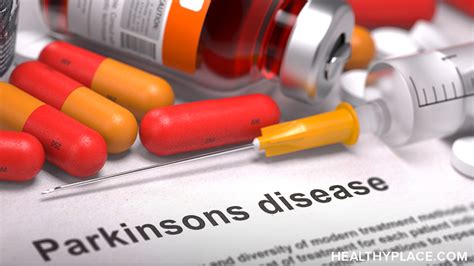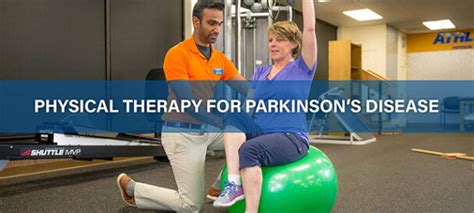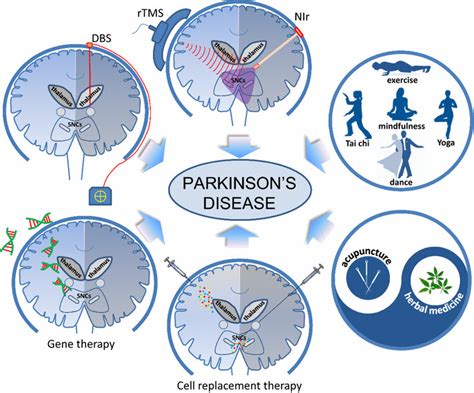Intro
Parkinson's disease is a neurodegenerative disorder that affects millions of people worldwide, causing symptoms such as tremors, stiffness, and difficulty with movement. While there is currently no cure for Parkinson's, there are various treatments and therapies that can help manage the symptoms and improve the quality of life for those affected. In this article, we will explore five ways to treat Parkinson's disease, including medication, surgery, physical therapy, dietary changes, and alternative therapies.
The importance of finding effective treatments for Parkinson's disease cannot be overstated. As the disease progresses, it can have a significant impact on a person's daily life, making everyday tasks a challenge. Furthermore, the emotional and psychological toll of living with Parkinson's should not be underestimated. By understanding the various treatment options available, individuals with Parkinson's can take an active role in managing their symptoms and improving their overall well-being. With the advancements in medical research and technology, there is hope for a better future for those living with Parkinson's.
In recent years, there has been a growing interest in the potential of interdisciplinary approaches to treating Parkinson's disease. This involves combining different therapies and treatments to create a personalized plan that addresses the unique needs of each individual. By taking a holistic approach to treatment, individuals with Parkinson's can experience significant improvements in their symptoms and quality of life. From medication and surgery to physical therapy and dietary changes, the options for treating Parkinson's are vast and varied. In the following sections, we will delve into the details of each treatment option, exploring their benefits, risks, and effectiveness.
Medication for Parkinson's Disease

The benefits of medication for Parkinson's disease are numerous. Not only can it help to manage the symptoms, but it can also slow down the progression of the disease. However, medication is not without its risks and side effects. Common side effects include nausea, dizziness, and hallucinations. Additionally, long-term use of medication can lead to complications such as dyskinesia, which is characterized by involuntary movements. To minimize the risks and maximize the benefits, it is essential to work closely with a healthcare provider to develop a personalized treatment plan.
Surgical Options for Parkinson's Disease

The benefits of surgical options for Parkinson's disease are significant. Not only can they help to manage the symptoms, but they can also improve the quality of life for individuals with Parkinson's. However, surgery is not without its risks and complications. Common risks include infection, bleeding, and cognitive impairment. Additionally, surgery may not be suitable for everyone, particularly those with advanced Parkinson's or other underlying health conditions. To determine whether surgery is a viable option, it is essential to consult with a healthcare provider and discuss the potential benefits and risks.
Deep Brain Stimulation
Deep brain stimulation is a surgical procedure that involves implanting a device that delivers electrical impulses to specific areas of the brain. This can help to regulate movement and reduce symptoms such as tremors and stiffness. The procedure typically involves several stages, including the implantation of the device, the programming of the device, and the adjustment of the settings. By working closely with a healthcare provider, individuals with Parkinson's can experience significant improvements in their symptoms and quality of life.Pallidotomy and Thalamotomy
Pallidotomy and thalamotomy are surgical procedures that involve surgically removing or destroying specific areas of the brain that are responsible for the symptoms. Pallidotomy involves removing a portion of the globus pallidus, while thalamotomy involves removing a portion of the thalamus. Both procedures can help to reduce symptoms such as tremors and stiffness, improving the quality of life for individuals with Parkinson's. However, these procedures are typically reserved for those with advanced Parkinson's or those who have not responded to other treatments.Physical Therapy for Parkinson's Disease

The benefits of physical therapy for Parkinson's disease are numerous. Not only can it help to manage the symptoms, but it can also improve the overall quality of life. Physical therapy can help to enhance mobility, balance, and coordination, reducing the risk of falls and other complications. Furthermore, physical therapy can help to improve cognitive function, reducing the risk of dementia and other cognitive impairments. To get the most out of physical therapy, it is essential to work closely with a healthcare provider and develop a personalized treatment plan.
Exercise and Physical Activity
Exercise and physical activity are essential components of physical therapy for Parkinson's disease. Regular exercise can help to improve mobility, balance, and overall physical function, reducing the symptoms of Parkinson's. Activities such as walking, swimming, and cycling can help to improve cardiovascular health, reducing the risk of complications such as heart disease and stroke. Additionally, exercise can help to improve cognitive function, reducing the risk of dementia and other cognitive impairments.Balance and Coordination Exercises
Balance and coordination exercises are critical components of physical therapy for Parkinson's disease. These exercises can help to improve balance and reduce the risk of falls, which is a common complication of Parkinson's. Activities such as tai chi and yoga can help to improve balance and coordination, reducing the risk of falls and other complications. Additionally, these exercises can help to improve cognitive function, reducing the risk of dementia and other cognitive impairments.Dietary Changes for Parkinson's Disease

The benefits of dietary changes for Parkinson's disease are numerous. Not only can a healthy diet help to manage the symptoms, but it can also improve the overall quality of life. A healthy diet can help to enhance mobility, balance, and coordination, reducing the risk of falls and other complications. Furthermore, a healthy diet can help to improve cognitive function, reducing the risk of dementia and other cognitive impairments. To get the most out of dietary changes, it is essential to work closely with a healthcare provider and develop a personalized treatment plan.
Foods to Eat
There are several foods that can help to manage the symptoms of Parkinson's disease. Foods that are high in antioxidants, such as berries and leafy greens, can help to reduce oxidative stress, which is a common complication of Parkinson's. Foods that are high in omega-3 fatty acids, such as salmon and walnuts, can help to reduce inflammation, which is a common complication of Parkinson's. Additionally, foods that are high in fiber, such as whole grains and legumes, can help to improve digestive health, reducing the risk of complications such as constipation.Foods to Avoid
There are several foods that should be avoided when managing the symptoms of Parkinson's disease. Foods that are high in saturated fat, such as red meat and full-fat dairy products, can increase the risk of heart disease and stroke. Foods that are high in sugar, such as sweets and sugary drinks, can increase the risk of cognitive impairment and other complications. Additionally, foods that are high in salt, such as processed meats and canned goods, can increase the risk of high blood pressure and other complications.Alternative Therapies for Parkinson's Disease

The benefits of alternative therapies for Parkinson's disease are numerous. Not only can they help to manage the symptoms, but they can also improve the overall quality of life. Alternative therapies can help to enhance mobility, balance, and coordination, reducing the risk of falls and other complications. Furthermore, alternative therapies can help to improve cognitive function, reducing the risk of dementia and other cognitive impairments. To get the most out of alternative therapies, it is essential to work closely with a healthcare provider and develop a personalized treatment plan.
Acupuncture
Acupuncture is a form of alternative therapy that involves the insertion of fine needles into specific points on the body. This can help to stimulate the body's natural healing processes, reducing the symptoms of Parkinson's. Acupuncture can help to improve mobility, balance, and coordination, reducing the risk of falls and other complications. Additionally, acupuncture can help to improve cognitive function, reducing the risk of dementia and other cognitive impairments.Meditation and Mindfulness
Meditation and mindfulness are forms of alternative therapy that involve the practice of mindfulness and meditation. This can help to reduce stress and anxiety, improving the overall quality of life. Meditation and mindfulness can help to improve cognitive function, reducing the risk of dementia and other cognitive impairments. Additionally, meditation and mindfulness can help to enhance mobility, balance, and coordination, reducing the risk of falls and other complications.What are the symptoms of Parkinson's disease?
+The symptoms of Parkinson's disease include tremors, stiffness, and difficulty with movement. Additionally, individuals with Parkinson's may experience cognitive impairment, depression, and anxiety.
How is Parkinson's disease diagnosed?
+Parkinson's disease is typically diagnosed through a combination of physical examination, medical history, and diagnostic tests such as MRI and CT scans.
What are the treatment options for Parkinson's disease?
+The treatment options for Parkinson's disease include medication, surgery, physical therapy, dietary changes, and alternative therapies such as acupuncture and meditation.
Can Parkinson's disease be prevented?
+While there is currently no cure for Parkinson's disease, there are several steps that can be taken to reduce the risk of developing the disease. These include maintaining a healthy diet, exercising regularly, and managing stress.
What is the prognosis for individuals with Parkinson's disease?
+The prognosis for individuals with Parkinson's disease varies depending on the severity of the symptoms and the effectiveness of treatment. With proper treatment and care, individuals with Parkinson's can lead active and fulfilling lives.
In
